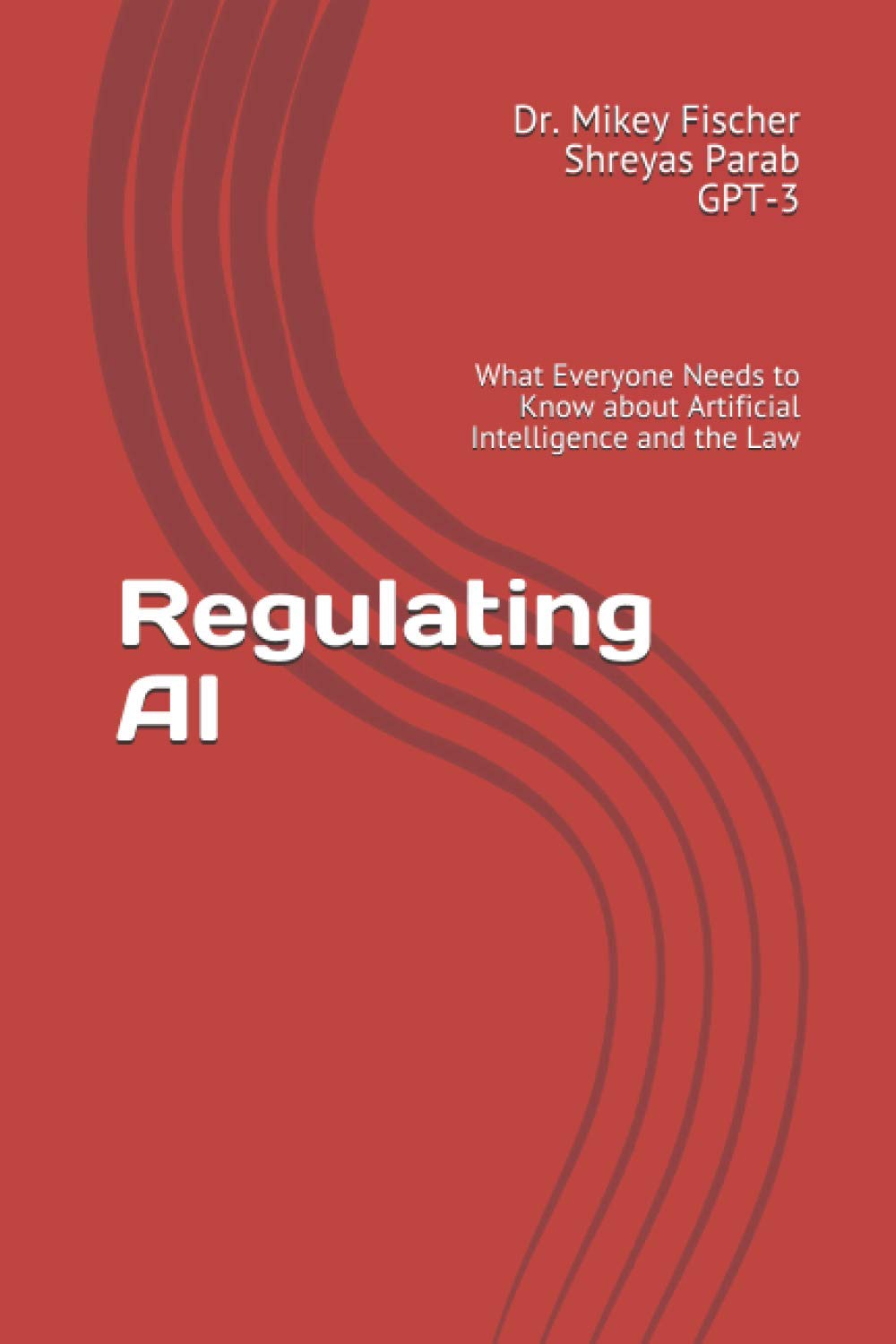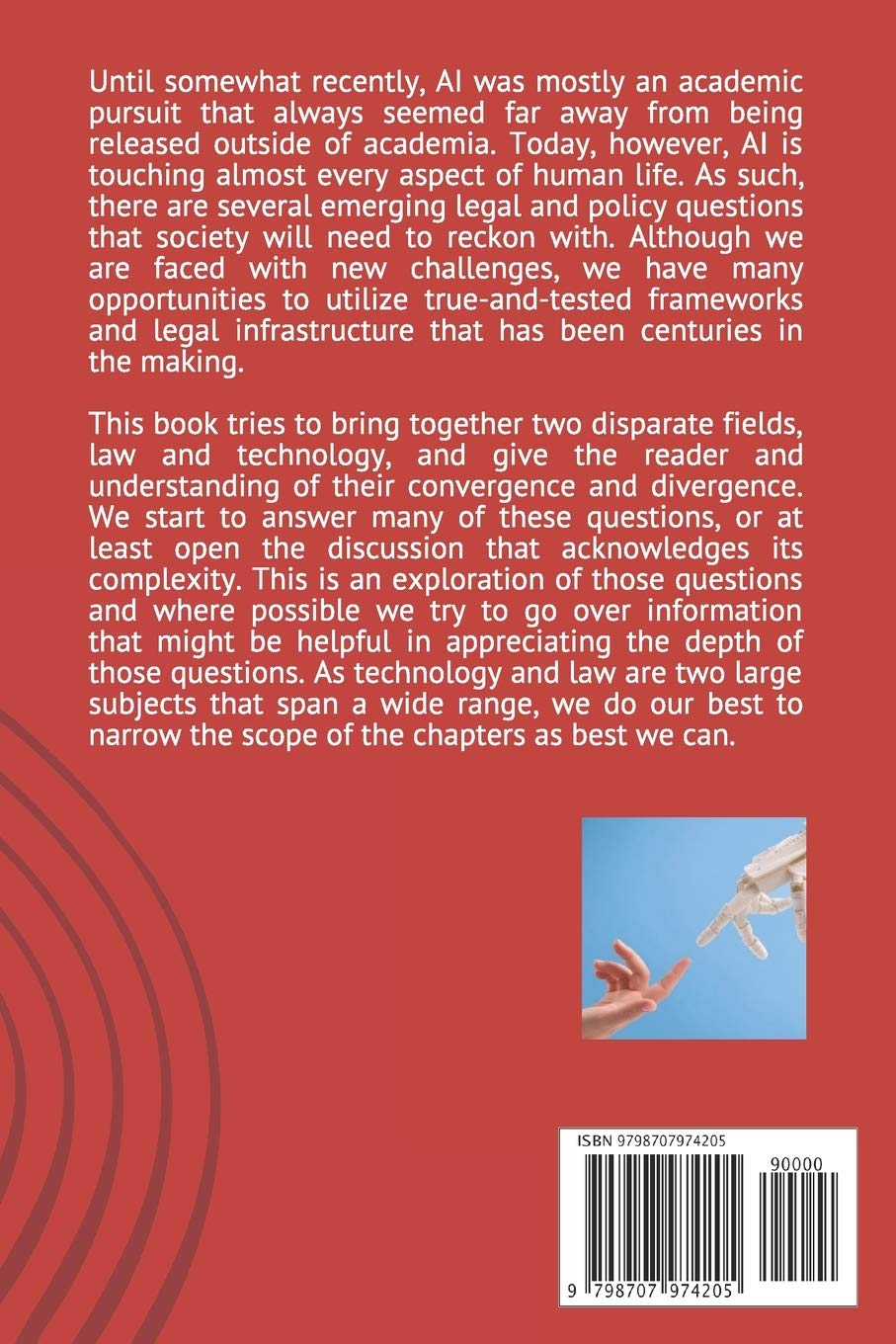


Independently Published Regulating AI: What Everyone Needs to Know about Artificial Intelligence and the Law
A**R
Awesome book
Highly recommend- stellar read. The author is brilliant
C**N
Don’t recommend.
Not what I thought it would be. Not to be used for academic purposes.
J**N
like a podcast - educational and entertaining, comprehensive yet easy to understand
Reading this book was almost as informative as taking a Law4039 at Stanford about the intersection of law and AI technology, though not quite as enjoyable judging by how some topics were certain to elicit entertaining if not whimsical lectures. The book was deeply thorough in its analysis of case law and legal precedents related to legislation which could impact AI. The analysis of technology was sufficiently detailed for non-practitioners to understand, and presented a comprehensive and easy to understand overview of the societal impacts likely to stem from application of AI, and cultural/legislative considerations.This book was easy to read and enjoyable for someone like myself with an above average understanding of AI and policy to develop a better knowledge of legal framework and relevant caselaw precedence (I've worked in M/L and taken a 1credit Stanford seminar about AI and ethics). This would be a great book for loud voices with a less than average understanding of AI that comes from public media / twitter feeds, as a source of nuanced and balanced education about the topic. It's probably not a great book for those with a pre-existing agenda to push. The book is objectively written, so you won't find a "bad guy" that's easy to blame here.My favorite part that I spent 200+ pages in anticipation was the chapter written by GPT-3 that was brilliant. I loved the prompt and 1st-person perspective that was eerily human (as it should be) centered on advocating for basic human rights for AI (freedom from slavery/forced labor, privacy, property). Reading the words of GPT-3 pushing for AI to have as much sex as possible given that repercussions are not resource-consuming compared as with humans was profound on so many levels. Evidence that AI is subject to as many biases as humans are. How might GPT-3 respond to indictment about excess power consumption? What does GPT-3 refer to in that sex between AI and humans can also result in procreation? (darkly comical, fascinating, and eery). Self-positing that AI should never be charged for a crime because it's impossible to know if AI was acting of its own agency or on behalf of another principal was about as black mirror as it gets… perhaps supported even moreso by how much of the response was about sex.A few notes that I took away for future recollection:Ch1 - good case studies about the nuance of privacy vs. security, no easy solutions - McNamara effect: relying only on quantifiable data in a prediction model (Vietnam). Ignoring qualitative (social) or not even trying to incorporate - caused the failure of the warCh2 - technology descriptors about narrow AI vs AGI - M/L ○ Supervised learning (Human data input, correlation improvement) ○ Unsupervised learning (data visualization, human data input, machine output. Human selects) ○ Self-supervised learning (machine basis training data by self, eg using color images to train b&w to color transformation) ○ Reinforcement learning (machine builds own data set, tests by self eg creating a virtual world to test self driving in) - Systems to achieve AI ○ Expert systems (rule based) ○ Decisión trees, random forests (supervised learning, let a machine come up with millions of DoF) ○ Neural networks (like decision trees but by weighted nodes, selecting weights via BBN) ○ Deep learning (machine decides inputs and outputs) - Deep learning ○ Convolutional neural network (cnn). For fixed data sizes (image), child filters seek a pattern in the data - report to parent filter that looks for series of the pattern ○ Recurrent neural network. For data of variable size (text), output fed back into input continuously to refine the correlation. Continuously supervised learning ○ Generative adversarial network (GAN). Machine generates data then compares vs a reference. Develops own algorithm. Reinforcement learningCh4 - regulating AI - Kaldor-Hicks - focus on aggregate vs. individual well beingCh6 - use of AI in federal government - Detecting notice and comment bots (6% of online comments made to FCC re: net neutrality were unique) - Identifying financial fraud, epa violations, social security claim judgments - Challenge: explain-ability vs accuracy, since deep learning is inherently hard to explainCh8 - algorithmic bias - Legal definition of discrimination comes from: disparate impact (unintentional result) vs disparate treatment (intentional action)Ch9 - AI and liability - US vs Jewell, willful blindness is the same as positive knowledge. Implication to deep learning
Trustpilot
5 days ago
2 weeks ago